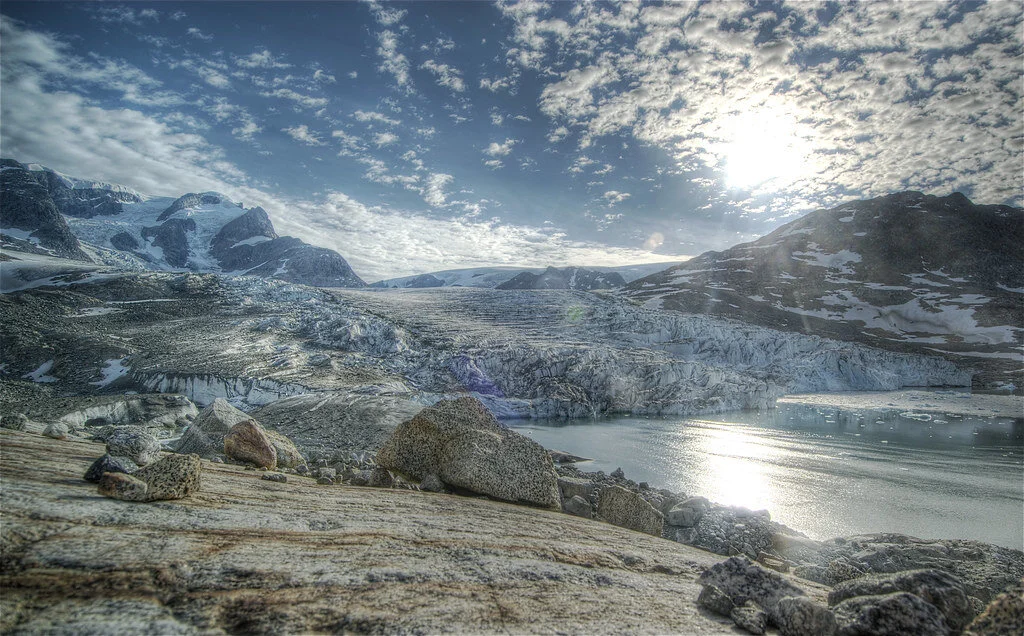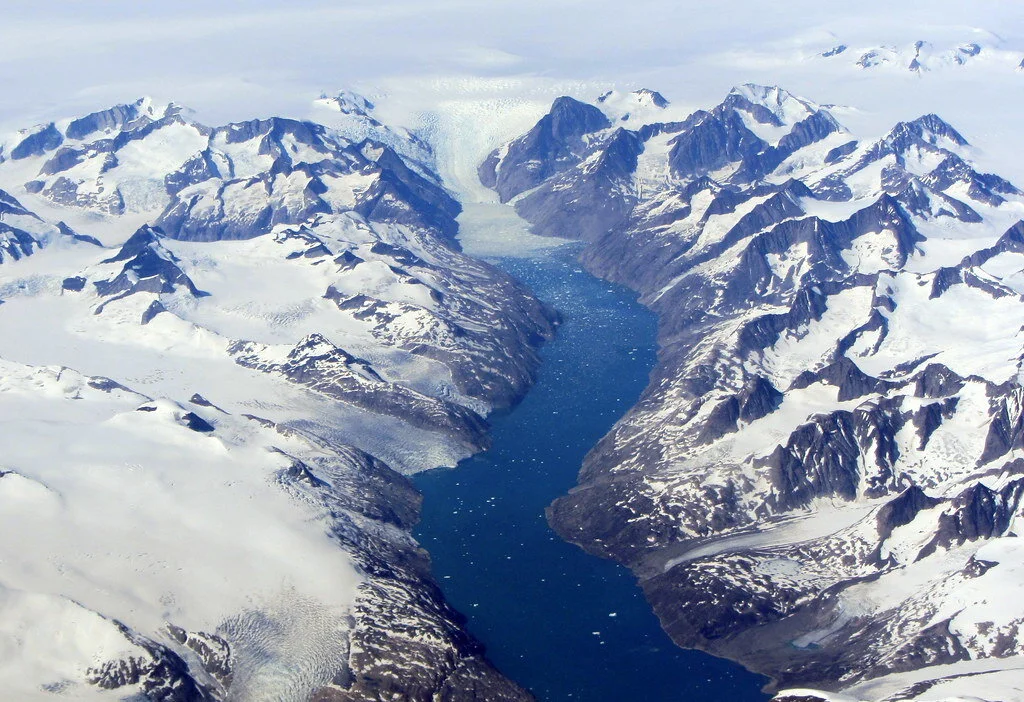The heat from the Earth’s crust that leads to the creation of hot springs, such as those on the island of Uunartoq in Greenland, may be contributing to sea level rise.
Glacier in Greenland. Ville Miettinen. CC BY-NC 2.0.
Over 1,000 years ago, Southern Greenland’s crystal-clear hot springs were discovered by the Norsemen, who were members of the Scandinavian seafaring warriors—also known as Vikings— who raided and colonized areas of Europe from the 9th to 11th centuries.
Hot springs are pools of naturally heated water that have the same temperature all year and are warmer than the average temperature of the location.
In Greenland, natural hot springs are very common, but the island of Uunartoq is the only place where the hot springs are warm enough to bathe in. There are three naturally-heated springs that run together into a small pool between the land of Alluitsup Paa and Nanortalik. In this pool, people can lie in the water and enjoy the mountains and icebergs around the spring.
The water in the hot spring is heated by deep layers in the Earth’s crust rubbing against each other, as opposed to being created by volcanic activity like the hot springs in Iceland. Uunartoq’s hot springs are a perfectly warm 98 to 100 degrees Fahrenheit (37 to 38 degrees Celsius).
Uunartoq’s hot springs also act as the only heated outdoor spa in Greenland. People can visit the springs all year round and in any weather because the water temperature is always suitable to soak in. Natural hot springs are also high in minerals, including calcium, magnesium, silica and lithium, which help to soothe muscles and promote healing.
Greenland fjord. Tearbringer. CC BY-NC 2.0.
However, the heat from the friction of Earth’s crust is possibly contributing to Greenland’s glacier retreat. Greenland’s melting glaciers are a large reason why global sea levels are rising in response to climate change.
According to researchers, a significant amount of geothermal activity is bubbling in Greenland beneath the Earth’s surface. The heat radiating from within Earth’s interior—which warms the hot springs—is melting the glaciers above, making it easier for them to slide into the sea and contribute to rising sea levels.
In addition, the Earth’s interior heat flowing outward (in scientific terms, geothermal heat flux) is causing deep-sea temperatures in the fjords to rise significantly, which also results in melting glaciers. It is important to understand the processes by which polar ice is melting in order to predict how soon, and how much, sea levels will rise in the future.
Isabelle Durso
Isabelle is an undergraduate student at Boston University currently on campus in Boston. She is double majoring in Journalism and Film & Television, and she is interested in being a travel writer and writing human-interest stories around the world. Isabelle loves to explore and experience new cultures, and she hopes to share other people's stories through her writing. In the future, she intends to keep writing journalistic articles as well as creative screenplays.



